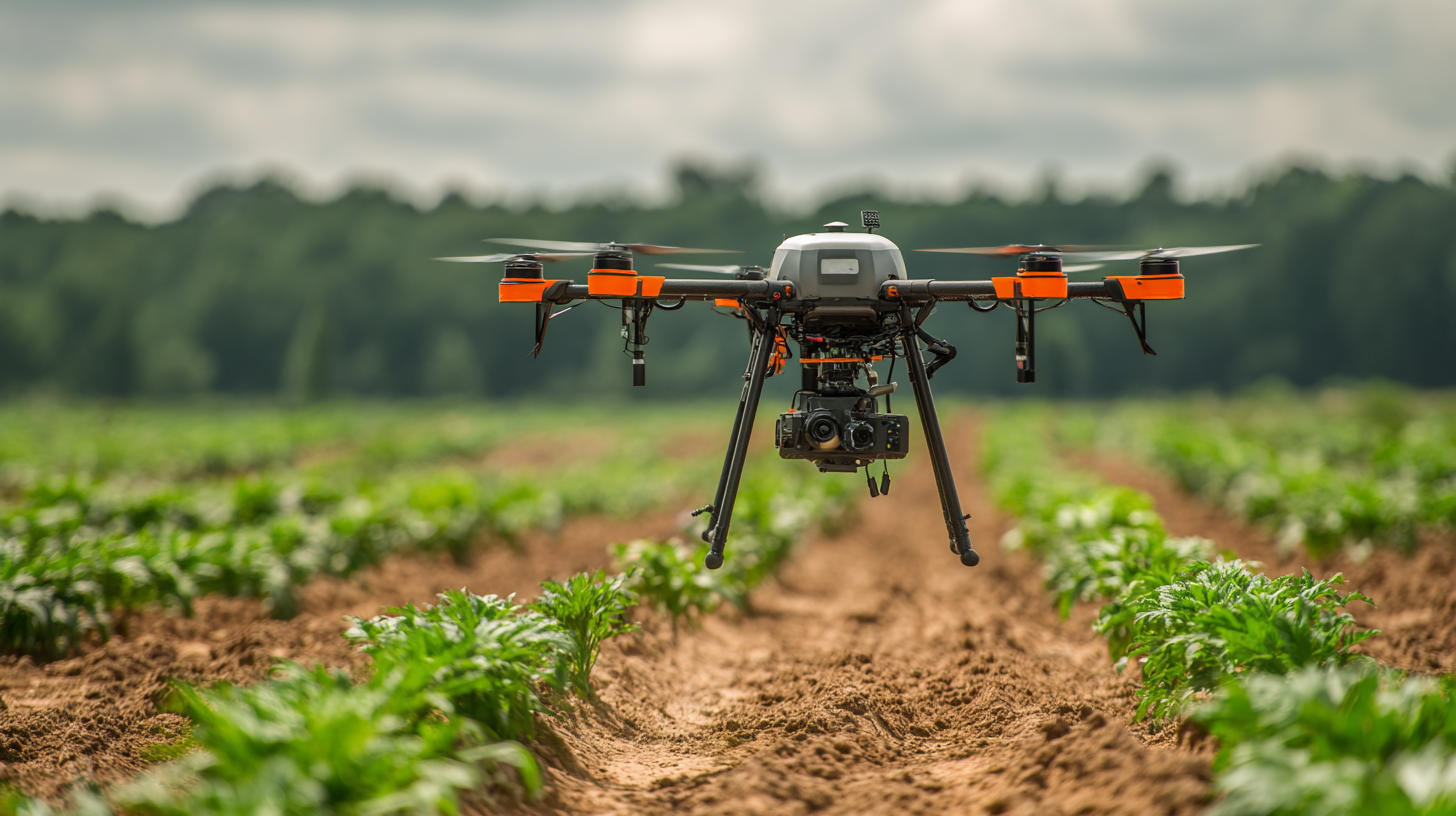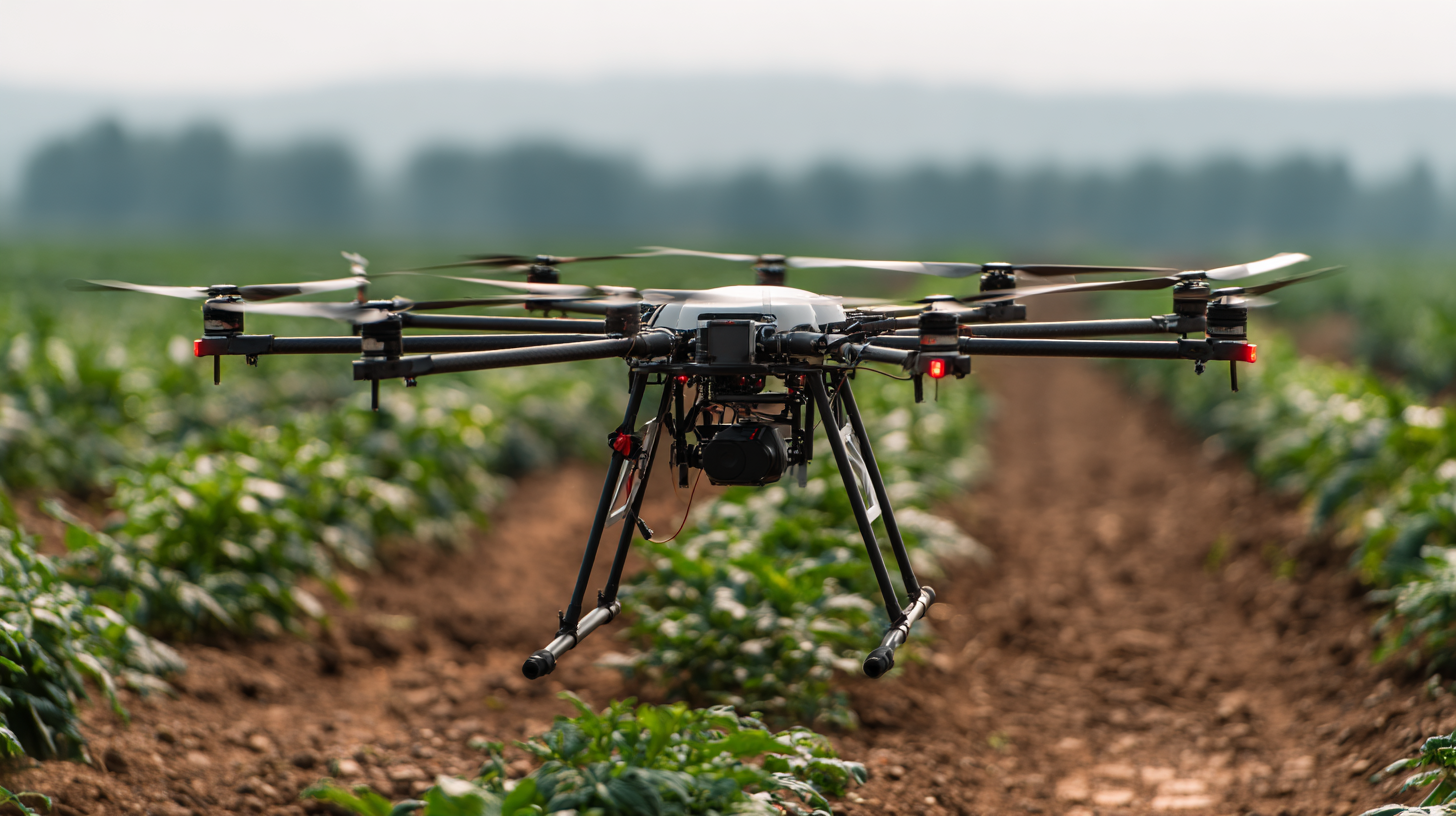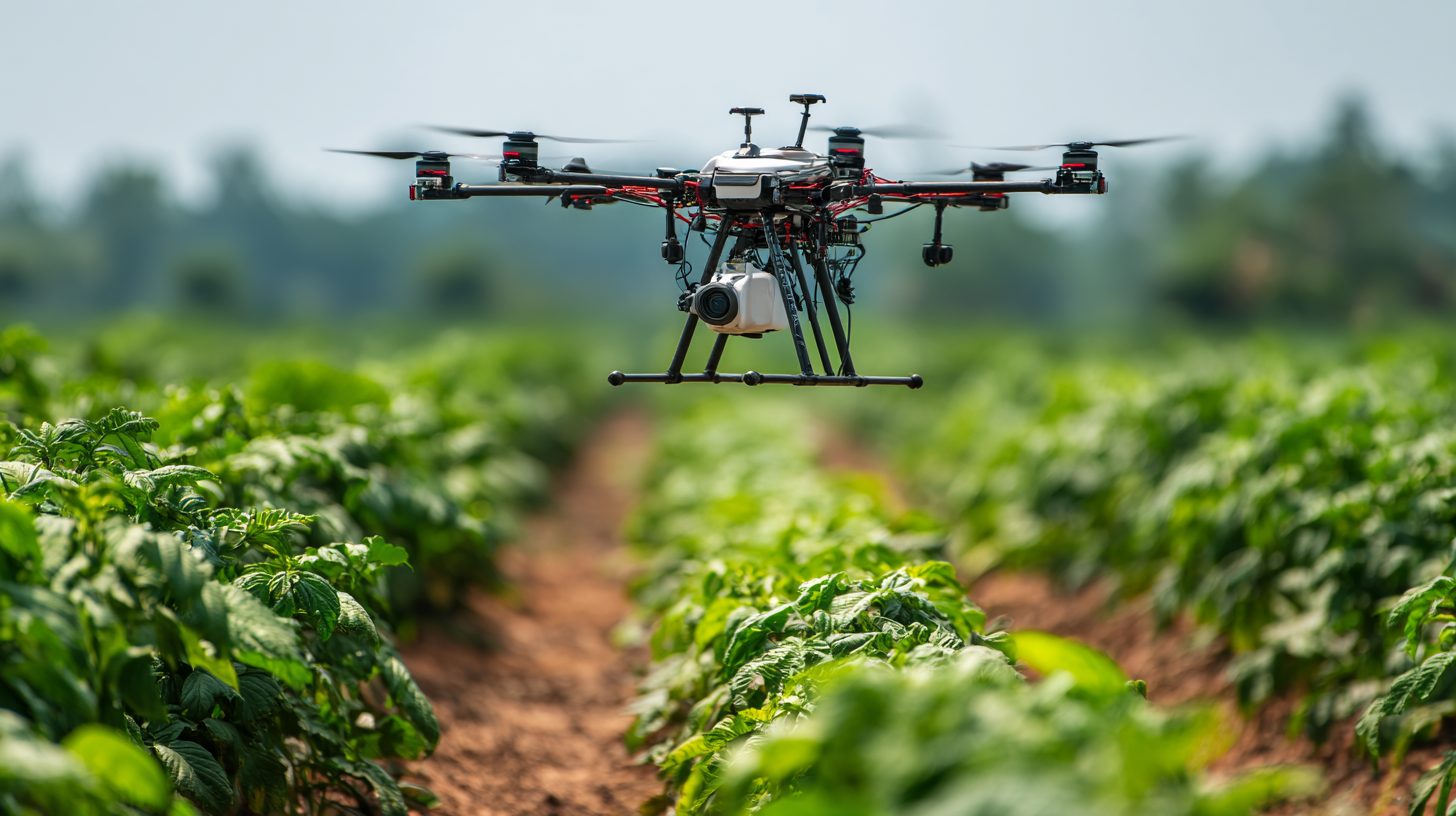

14, Raghava Enclave, Transport Road, Secunderabad, Hyderabad (500009)
©2024 All Rights Reserved by excitechrobot.com
In the face of an increasingly pressing global food demand, projected to reach 9.7 billion by 2050 according to the United Nations, agriculture is undergoing a significant transformation, with Agriculture Robots leading the way. These innovative machines are not only enhancing productivity but also addressing labor shortages and improving sustainability in farming practices.
A report by ResearchAndMarkets indicates that the global agricultural robotics market is expected to grow at a CAGR of 24.9%, reaching $20.6 billion by 2025. This highlights the vital role that technology, particularly Agriculture Robots, plays in modern farming. As farmers look to optimize operations, reduce costs, and meet the growing demand for food, leveraging these cutting-edge tools has become essential.

In this blog, we will explore 10 essential tips for integrating Agriculture Robots into modern farming, fostering a smarter and more efficient agricultural ecosystem.
In the realm of modern farming, the integration of agriculture robots is proving to be a game-changer. These advanced technologies are designed to enhance operational efficiency, increase yield, and reduce labor costs. According to a report by MarketsandMarkets, the global agricultural robotics market is projected to reach $20.6 billion by 2025, driven by the increasing demand for automation in farming. Agriculture robots, such as autonomous tractors and drones, are capable of performing tasks ranging from planting to crop monitoring, thereby significantly advancing agricultural practices.

Tip 1: Invest in Precision Agriculture Technology - Utilizing sensors and drones can help farmers gather real-time data on crop health and environmental conditions, enabling more informed decisions that enhance productivity.
As farmers leverage these robotic innovations, they can effectively cope with labor shortages and rising operational costs. A study by ABI Research suggests that by 2030, farms utilizing robotic systems could see a 60% increase in productivity.
Tip 2: Embrace Automation for Labor-Intensive Tasks - Automating repetitive tasks such as weeding and harvesting frees up valuable time for farmers, allowing them to focus on strategic planning and crop management.
The role of agriculture robots in modern farming is not just about replacing human labor; it’s also about empowering farmers with technology that optimizes their operations and boosts sustainability. Embedding these intelligent systems into existing workflows can result in significant long-term benefits and a more resilient agricultural sector.
When considering agriculture robots for modern farming, key features play a crucial role in maximizing efficiency and productivity. One essential attribute is automation capabilities, which can lead to a reduction in labor costs. According to a report by the International Society of Agricultural Engineers, the implementation of autonomous farming technologies can decrease labor requirements by up to 30%, allowing farmers to allocate resources to other critical areas of their operations.

Another vital feature is precision agriculture technology, which ensures that resources such as water and fertilizers are used efficiently. Studies indicate that precision agriculture can enhance crop yield by approximately 15% while minimizing environmental impact. Additionally, look for robots equipped with advanced sensors and data analytics tools. These technologies provide real-time data on soil health and pest detection, enabling proactive management. Research from MarketsandMarkets predicts that the agricultural robotics market will reach $20.6 billion by 2025, highlighting the growing importance of these features in driving the future of farming.
As agriculture increasingly turns to automation, integrating robots into traditional farming practices becomes essential. According to a report from Allied Market Research, the global agricultural robots market is projected to reach $20 billion by 2025, indicating a significant adoption trend among farmers. To successfully integrate these robots, it is crucial to evaluate the specific needs of the operation. For instance, tasks such as crop monitoring, planting, and harvesting can benefit from robotic assistance, thereby improving efficiency and reducing labor costs.
Effective training and collaboration between human workers and robots are also essential. Research by the International Journal of Agriculture and Biology reveals that combining human expertise with robotic precision can enhance productivity by up to 30%. Farmers should start with pilot programs to familiarize themselves with the technology, gradually expanding its use based on performance metrics and feedback from their teams. Emphasizing the synergy between traditional methods and innovative technology will not only streamline operations but also ensure more sustainable farming practices for the future.
The integration of agriculture robots in modern farming is reshaping the agricultural landscape, but ensuring their optimal performance requires dedicated attention to training and maintenance. A report by the International Federation of Robotics (IFR) revealed that agricultural robot sales are projected to increase by over 30% annually, highlighting the urgency for farmers to understand how to effectively maintain these technologies. Proper training programs are essential for operators to fully utilize the sophisticated features of these robots, such as automated harvesting and precision planting, which can enhance efficiency and yield.
Moreover, regular maintenance activities are crucial for sustaining the performance of agriculture robots. According to a recent study from the American Society of Agricultural and Biological Engineers (ASABE), routine maintenance can improve a robot's operational lifespan by up to 40%. This includes software updates, mechanical inspections, and calibration checks that ensure robots can adapt to changing field conditions. Implementing a systematic maintenance schedule not only minimizes downtime but also maximizes productivity, allowing farmers to reap the full benefits of their robotic investments in an increasingly competitive agricultural market.
This chart illustrates the performance metrics of agriculture robots in modern farming across various tasks. The data reflects the efficiency of robotics in planting, crop monitoring, harvesting, and maintenance activities.
Agricultural robotics is reshaping the future of farming as we know it, particularly within the context of vertical farming. This innovative approach to agriculture leverages advanced technologies and specialized components, such as sophisticated lighting systems, efficient irrigation mechanisms, and precise climate control. Sensors play a crucial role in monitoring plant health and environmental conditions, enabling farmers to optimize their yields. As the demand for food continues to increase with an expected global population of 9.7 billion by 2050, the vertical agriculture market is projected to experience significant growth, providing sustainable solutions to meet this challenge.
The utilization of robotics in agriculture extends to unmanned ground vehicles (UGVs) and drones, which are revolutionizing farming operations. The UGV market alone is anticipated to grow from $320 million in 2022 to $910 million by 2030, highlighting a compound annual growth rate of 17.4%. Drone technology, meanwhile, aids in crop monitoring and precision spraying, enhancing overall operational efficiency. In this evolving landscape, farmers must stay informed about technological advancements that not only serve their operational needs but also contribute to the larger objective of sustainable agricultural practices. With continued investment and innovation in robotic solutions, the agricultural sector is on the brink of a significant transformation that promises to address both productivity and environmental concerns.
| Tip | Description | Benefits | Future Trends |
|---|---|---|---|
| 1. Invest in Education | Train staff in robot operation and maintenance. | Increased productivity and reduced downtime. | Growing demand for skilled operators. |
| 2. Start Small | Implement one or two robots before full adoption. | Minimize risk and assess effectiveness. | Incremental advancements will continue. |
| 3. Optimize Workflow | Reassess farming practices to integrate robots. | Enhanced efficiency and streamlined operations. | Increased focus on automation. |
| 4. Data Utilization | Use data collected by robots for decision-making. | Improved resource allocation and yield. | Data-driven agriculture is on the rise. |
| 5. Collaborate with Tech Providers | Engage with companies specializing in agricultural robots. | Access to expert knowledge and support. | Increased partnerships and innovation in technology. |
| 6. Focus on Sustainability | Select robots for eco-friendly farming practices. | Reduction in chemical usage and environmental impact. | Sustainable farming will be prioritized. |
| 7. Monitor ROI | Evaluate the return on investment from robotics. | Ensure cost-effectiveness of technology adoption. | Focus on financial metrics in agriculture. |
| 8. Upgrade Regularly | Keep technology updated to improve efficiency. | Leverage the latest features and improvements. | Continuous innovation in robotics. |
| 9. Engage with the Community | Participate in forums and groups about agri-tech. | Share experiences and gain insights from others. | Strengthening networks among farmers. |
| 10. Be Flexible | Adapt to changes in technology and market needs. | Ability to capitalize on new opportunities quickly. | Agility will be key in future agriculture. |






